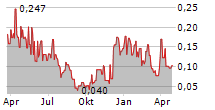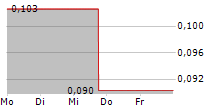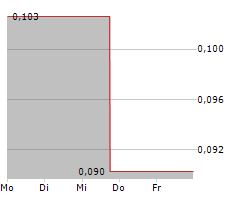- Samples show uranium up to 3,985 ppm and vanadium up to 2,499 ppm, indicating strong mineralization potential.
- Shares geological similarities with world-class shale-hosted deposits.
- Program underway for detailed mapping, sampling, gamma-ray scanning, and stratigraphic profiling.
- Idaho's mining-friendly regulations and recent U.S. federal policy shifts toward domestic uranium production position Long Canyon for accelerated advancement.
Vancouver, British Columbia--(Newsfile Corp. - June 10, 2025) - US Critical Metals Corp. (CSE: USCM) (OTCQB: USCMF) (FSE: 0IU) ("USCM" or the "Company") is pleased to announce the commencement of a program for the Long Canyon Uranium and Vanadium Project in Idaho ("Long Canyon" or the "Project"). Long Canyon is part of an underexplored geologic environment that has the potential to develop into a large-scale exploration opportunity. Black shale-hosted uranium and vanadium deposits have economic potential in multiple jurisdictions and are known to contain significant resources. This positions Long Canyon to potentially become a new geologic source of uranium and vanadium within the United States (the "U.S."). Long Canyon is in partnership with IDEX Metals Corp. (for more information see Company's press release - access here).
Executive Order
Given the political shift to deglobalize and secure domestic sources of supply, the program is strategically timed to capitalize on the sweeping US federal directive to expand nuclear energy and reform uranium permitting processes in the US, as set forth in the Executive Order released on May 23, 2025 (for more information see Executive Order - access here). Long Canyon is ideally positioned given it has the hallmarks of a polymetallic shale-hosted system to benefit from these initiatives. With the U.S. federal government actively dismantling regulatory roadblocks to domestic uranium production and reactor deployment, Long Canyon stands to benefit from:
- Increasing demand for domestic uranium.
- Accelerated permitting windows.
- Federal support for critical mineral supply chains.
- Increased interest in North American uranium assets.
Field Program
Led by Palliser Exploration Ltd. ("Palliser"), an experienced geologic and exploration consultancy, the program is designed to advance the understanding of uranium, vanadium, molybdenum, lead, and zinc mineralization within the carbonaceous black shales of the Blue Dome District. This campaign will integrate systematic rock sampling, radiometric analyses, and structural mapping to refine drill targeting and exploration models.
The program will be led by a multidisciplinary team of four experienced geologists, including a Professional Geoscientist, a Field Geologist, and two Junior Geologists. Fieldwork will focus on 12 traverses across structurally complex areas identified through historical data and high-resolution LiDAR analysis. The program also includes a reconnaissance visit to the nearby Autunite Hill prospect within the project area, aiming to confirm historic uranium mineralization and evaluate its potential as a complementary zone of interest.
Utilizing a combination of rock sampling, gamma-ray scanning, and stratigraphic profiling, the team will document geochemical and lithological variations, fracture density, and alteration features. Collected samples will be securely transported to an analytical laboratory for assay. The effort will culminate in a detailed geological and structural map georeferenced sample database, and detailed exploration report.
Palliser's data-driven approach will be further enhanced through optional services such as SQL-based geoscience database management and machine learning-driven prospectivity mapping-offering USCM comprehensive support for ongoing exploration success in Idaho.
Historic Sampling Results
The property has had three phases of geochemical sampling completed from 2020 through 2022 by its previous owners, all of which have returned highly anomalous values. This previous work completed by Idaho Silver included 70 rock chip and 383 soil samples and returned the following values:
- Uranium up to 521 ppm (average of 32 ppm) in rock chip and grab samples and 3,985 ppm (average of 29 ppm) in soil samples (Long Canyon 2022 Soils and Rock Map U3O8).
- Vanadium up to 0.7% (average of 293 ppm) in rock chip and grab samples and 5,279 ppm (average of 159 ppm) in soil samples (Long Canyon 2022 Soils and Rock Map V2O5).
- Nickel up to 0.17% (average of 256 ppm) in rock chip and grab samples and 5,957 ppm (average of 188 ppm) in soil samples.
- Molybdenum up to 0.48% (average of 331 ppm) in rock chip and grab samples and 6,969 ppm (average of 101 ppm) in soil samples.
- Lead up to 9.4% (average of 0.55%) in rock chip and grab samples and 290,700 ppm (average of 2,093 ppm) in soil samples.
- Zinc up to 1.5% (average of 0.16%) in rock chip and grab samples and 15,400 ppm (average of 561 ppm) in soil samples.
Cautionary Note: The reader is cautioned that rock grab samples are selective by nature and may not represent the true grade or style of mineralization across the Project. The exploration information presented herein includes historical data developed by previous operators of the Project. The Company is providing these historical data for informational purposes only and gives no assurance as to their reliability and relevance to the Company's proposed exploration program at the Project. The Company has not completed any quality assurance program or applied quality control measures to the historical data.
In addition to the above, the Company's technical team also conducted an initial site visit across the Long Canyon and upper Crooked Creek RAPC claims, targeting historic trenches and mineralized shale-sandstone contacts. An additional of 19 rock chip samples were collected with uranium values from 143 ppm to nil, with notable findings including:
- Sample 976938: 143 ppm uranium (U) and 2,499 ppm vanadium (V), from sub-cropping sandy shale in a dozer trench.
- Sample 976935: Elevated levels of zinc (5,096 ppm), copper (840 ppm), arsenic (1,108 ppm), and nickel (503 ppm).
The following images were generated during the initial site visit:

Photo 1: Image looking southwest at the main prospect area at the Long Canyon RAPC claims
To view an enhanced version of this graphic, please visit:
https://images.newsfilecorp.com/files/8837/255000_716d9612349aa826_001full.jpg

Photo 2: Image showing the typical outcrop/rubble-crop of shale exposed in historic trenches at the Long Canyon area
To view an enhanced version of this graphic, please visit:
https://images.newsfilecorp.com/files/8837/255000_716d9612349aa826_002full.jpg

Photo 3: Image showing historic drill hole and capped casing at the Meyers Creek East claim block (RAPC Claims 68-71). Cuttings are 100% carbonaceous black shale.
To view an enhanced version of this graphic, please visit:
https://images.newsfilecorp.com/files/8837/255000_716d9612349aa826_003full.jpg
Shale-Hosted Deposits
Shale-hosted uranium and vanadium deposits, such as the Viken Deposit in Sweden, represent a unique class of mineral systems formed within organic-rich sedimentary basins. These deposits typically occur in black shales and are enriched in a suite of metals including uranium, vanadium, molybdenum, nickel, zinc, and rare earth elements. They can be stratiform and laterally extensive.
Long Canyon exhibits geological similarities to this deposit type, particularly with the presence of gossanous and supergene-enriched black shale and sandstone units, as well as the suite of metals reported in assays. While not identical in scale to Viken, Long Canyon shares the hallmarks of a polymetallic shale-hosted system with uranium values up to 3,985 ppm historically and current sampling showing vanadium up to 2,499 ppm. This positions Long Canyon within a broader global context of significant shale-hosted deposits, while benefitting from its US location and pro-mining jurisdiction in Idaho.
Black shale formations are increasingly recognized as important hosts for economic mineral deposits, particularly for metals that are essential in clean energy, defense, and advanced manufacturing sectors. These fine-grained, organic-rich sedimentary rocks serve as natural geochemical traps, concentrating elements like uranium, vanadium, molybdenum, nickel, zinc, copper, and rare earth elements through a combination of biological, chemical, and diagenetic processes.1
Globally, black shale-hosted deposits such as Viken (Sweden) have demonstrated the potential for large-scale, stratiform resources with significant by-product value. These systems often span large geographical areas.
At Long Canyon, the presence of locally gossanous and metal-enriched shale, as evidenced by surface sampling, supports the presence of a shale-hosted system. Should deeper stratigraphy mirror these surface expressions, there exists potential for a broad, basin-style deposit with scale comparable to historical black shale provinces, albeit in a more accessible and mining-friendly jurisdiction.
Grade Analysis
Long Canyon, while early-stage, has demonstrated historical grades up to 3,985 ppm U from historical sampling and 143 ppm U from the recent program. Vanadium reached 2,499 ppm. As a reference point, the Viken Deposit in Sweden, a massive alum shale system, hosts an Inferred Mineral Resource of 4.3 billion tonnes grading 161 ppm U3O₈, containing 1.5 billion pounds of U3O₈. It represents one of the world's largest undeveloped uranium resources, and also includes substantial estimates of vanadium, molybdenum, nickel, copper, zinc, and other strategically important critical raw materials.2 In 2018, Sweden implemented a ban on uranium mining by amending its Environmental Code, effectively halting all uranium exploration and extraction activities. This decision was influenced by environmental concerns and public opposition to nuclear energy. The ban is currently under review.3
While Viken has scale, Long Canyon's sample grades fall within the same order of magnitude and may reflect potential for higher-grade structurally controlled mineralization within a favorable jurisdiction and permitting environment.
Cautionary Note: The comparable information about other projects was obtained from public sources and has not been verified by the Company. Comparable means information that compares an issuer to other issuers. The information is a summary of certain relevant operational attributes of certain mining and resource companies and has been included to provide an overview of the performance of what are expected to be comparable issuers. The comparables are considered to be an appropriate basis for comparison with the Company based on their industry, commodity mix, jurisdiction, and additional criteria. The comparable issuers face different risks from those applicable to the Company. Relevant material concerning any adjacent or comparable properties included in this press release is limited to information publicly disclosed by the owner or operator for such adjacent or comparable property. The Company has relied on the Qualified Persons responsible for such information and has not independently verified such information. The Company cautions that past production, mineral reserves, resources or occurrences on adjacent or comparable properties are not indicative of the mineralization on the Company's properties. Readers are cautioned that the past performance of comparables is not indicative of future performance and that the performance of the Company may be materially different from the comparable issuers. You should not place undue reliance on the comparable information provided in this press release.
Sources
(1) Brueckner, S.M., Green, T., Reynolds, M.A., Gregory, D., Silva, R., "Geochemistry and mineralogy of the shale-hosted vanadium Van Property deposit, Mackenzie Mountains, Northwest Territories, Canada," American Mineralogist, vol. 110 (3), pp. 337-363 (March 2025)
(2) District Metals Corp., "Viken Energy Metals Deposit Inferred Mineral Resource Estimate of 4.3 Billion Tonnes at 161 ppm U3O₈ containing 1.5 Billion Pounds U3O₈", press release dated April 29, 2025, effective NI 43-101 Technical Report available on SEDAR+
(3) Swedish Government (Prop. 2017/18:212) - Amendments to the Environmental Code and Minerals Act prohibiting uranium mining and removing uranium as a concession mineral, effective 1 August 2018
Qualified Person
The scientific and technical information contained in this news release has been reviewed and approved by Robert J. Johansing, BSC. geology, MSc economic geology, who is a qualified person as defined in NI 43-101. Mr. Johansing is a consultant of the Company.
Quality Control and Quality Assurance
All soil and rock samples were prepped and analyzed at MSA Labs in Langley, British Columbia, an ISO 17025 and ISO 9001 certified laboratory. Rock samples were dried, crushed and sieved to 70% passing 2mm; a 250 gram(g) split was pulverized to 80% passing 75 microns. Soil samples were dried and sieved to -180 micron (80 mesh). Following preparation, soil and rock assays were determined by the IMS-131 method. A 20g aliquot of the prepared pulp was cold-digested with HNO3, then HCl is added, and the sample was heated at 130C for 40 minutes. Digestion was carried out in disposable plastic bottles to eliminate cross-contamination from digestion vessels and heated via graphite block for even heating. The resulting solution was analyzed via ICP-MS and ICP-ES for 51 elements and was corrected for inter-element spectral interferences.
Blind certified reference materials (CRMs) and duplicate soil samples were inserted at a frequency of approximately 1 in every 25 samples. Duplicate soil samples were prepared in the field by homogenizing soil collected at a specific sample site and placing it in two soil sample bags in sequence. CRM results for copper, silver, lead and zinc were all within acceptable limits with no failures. CRMs for uranium and vanadium were unavailable and were not employed at Long Canyon. MSA Labs also employs internal quality control standards, duplicates and blank samples at set frequencies. Lab blanks showed no indications of contamination. Duplicate sample precision results were excellent.
About US Critical Metals Corp.
USCM is focused on mining projects that will further secure the US supply of critical metals and rare earth elements, which are essential to fueling the new age economy. Pursuant to investments and option agreements with private Canadian and American companies, USCM's projects include the Long Canyon Uranium and Vanadium Property in Idaho, the Sheep Creek located in Montana, the McDermitt Lithium Property in Nevada, the Clayton Ridge Lithium Property located in Nevada, and the Haynes Cobalt Property located in Idaho. A significant percentage of the world's critical metal and rare earth supply comes from nations with interests that are contrary to those of the US. USCM intends to explore and develop critical metals and rare earth assets with near- and long-term strategic value to the advancement of U.S. interests.
For further information please contact:
Darren Collins
Chief Executive Officer & Director
Email: dcollins@uscmcorp.com
Neither the Canadian Securities Exchange nor the Market Regulator (as that term is defined in the policies of the Canadian Securities Exchange) accepts responsibility for the adequacy or accuracy of this release.
Disclaimer for Forward-Looking Information
This news release contains certain information that may be deemed "forward-looking information" with respect to USCM within the meaning of applicable securities laws. Such forward-looking information involves known and unknown risks, uncertainties and other factors that may cause USCM's actual results, performance or achievements, or developments in the industry to differ materially from the anticipated results, performance or achievements expressed or implied by such forward-looking information. Forward-looking information includes statements that are not historical facts and are generally, but not always, identified by the words "expects", "plans", "anticipates", "believes", "intends", "estimates", "projects", "potential" and similar expressions, or that events or conditions "will", "would", "may", "could" or "should" occur. Forward-looking information contained in this press release may include, without limitation, the exploration plans and expected exploration and drilling results at Long Canyon, results of operations, and the expected financial performance of the Company.
Although USCM believes the forward-looking information contained in this news release is reasonable based on information available on the date hereof, by its nature, forward-looking information involves assumptions and known and unknown risks, uncertainties and other factors which may cause our actual results, level of activity, performance or achievements, or other future events, to be materially different from any future results, performance or achievements expressed or implied by such forward-looking information.
Examples of such assumptions, risks and uncertainties include, without limitation, assumptions, risks and uncertainties associated with general economic conditions; the Covid-19 pandemic; adverse industry events; the receipt of required regulatory approvals and the timing of such approvals; that USCM maintains good relationships with the communities in which it operates or proposes to operate; future legislative and regulatory developments in the mining sector; USCM's ability to access sufficient capital from internal and external sources, and/or inability to access sufficient capital on favorable terms; mining industry and markets in Canada and generally; the ability of USCM to implement its business strategies; competition; the risk that any of the assumptions prove not to be valid or reliable, which could result in delays, or cessation in planned work; risks associated with the interpretation of data, the geology, grade and continuity of mineral deposits; the possibility that results will not be consistent with USCM's expectations; as well as other assumptions, risks and uncertainties applicable to mineral exploration and development activities and to USCM, including as set forth in the USCM's public disclosure documents filed on the SEDAR website at www.sedarplus.ca.
The forward-looking information contained in this press release represents the expectations of USCM as of the date of this press release and, accordingly, is subject to change after such date. Readers should not place undue importance on forward-looking information and should not rely upon this information as of any other date. While USCM may elect to, it does not undertake to update this information at any particular time except as required in accordance with applicable laws.

To view the source version of this press release, please visit https://www.newsfilecorp.com/release/255000
SOURCE: US Critical Metals Corp.


